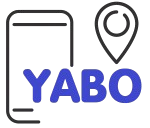Textile and Apparel Business

Type: Service.
Key Products for Sale:
- Customizable clothing including t-shirts, hoodies, dresses, and jackets.
- Accessories such as bags, hats, and scarves, are also customizable.
- Limited edition collaborations with local artists and designers.
- Sustainable fashion workshops and events.
Technology Considerations:
- Interactive online platform for customization.
- AI-driven sizing algorithms for accurate fit.
- Virtual fitting rooms for enhanced customer experience.
- Sustainable manufacturing technology for eco-friendly production processes.
Market for the Products:
- Ethically conscious consumers.
- Fashion-forward individuals seeking unique and personalized clothing.
- Corporate clients in need of sustainable uniforms or promotional apparel.
- Millennials and Gen Z demographic interested in eco-friendly fashion.
Key Inputs into the Business:
- Sustainable materials sourced from eco-friendly suppliers.
- Ethical manufacturing partners.
- Skilled designers and artisans.
- Marketing and branding efforts to reach the target audience.
Product Preparation Process:
- Design customization through an online platform.
- Fabric selection and cutting.
- Ethical manufacturing with attention to quality and detail.
- Personalization through embroidery, prints, or other customization options.
Quality Considerations:
- Use of high-quality sustainable materials.
- Attention to detail in the manufacturing process.
- Strict quality control measures to ensure customer satisfaction.
- Regular feedback loops for continuous improvement.
Cost of Investment:
- Initial Investment in Technology Development and Online Platform:
- Customizable online platform development: KES 300,000 – 600,000
- Purchase of necessary software licenses: KES 100,000 – 300,000.
Procurement of Sustainable Materials and Equipment:
- Initial stock of sustainable fabrics and materials: KES 500,000 – 1,000,000
- Sewing machines and equipment: KES 150,000 – 300,000
- Embroidery machines or equipment for customization: KES 100,000 – 200,000
Marketing and Branding Expenses:
- Brand development and logo design: KES 50,000 – 150,000
- Digital marketing campaigns (social media ads, influencer collaborations): KES 150,000 – 350,000
- Packaging and labeling materials: KES 50,000 – 100,000.
Operational Costs:
Salaries for initial team members (designers, production staff, administrative roles): KES 300,000 – 600,000 (per month for the first few months)
Rent for office space or manufacturing facility: between KES 100,000 to up to 250,000 (per month)
Utilities (electricity, water, internet): between KES 25,000 to about 50,000 (per month)
Miscellaneous expenses (transportation, office supplies): between KES 50,000 and 100,000 (per month)
Total Initial Investment Estimate: This would range from approximately KES 1,525,000 to KES 3,250,000, depending on various factors such as location, scale of operations, and sourcing costs.
These figures are more manageable and reflect a more realistic estimate for starting your Custom Apparel business in Kenya. It’s essential to conduct thorough research and create a detailed business plan to accurately estimate the costs and ensure financial viability.
Required Operational Infrastructure:
- Manufacturing facilities equipped with eco-friendly machinery.
- Online platform for customization and sales.
- Storage and distribution facilities.
- Customer service and support systems.
Most Suitable or Viable Location:
Urban areas with a concentration of eco-conscious consumers.
Accessible locations with good transportation links.
Areas with a strong presence of local artists and designers for collaborations.
Potential Sources of Investment Capital:
- Venture capital firms interested in sustainable fashion startups.
- Angel investors with a passion for eco-friendly initiatives.
- Crowdfunding campaigns targeting environmentally conscious backers.
- Government grants or loans for sustainable businesses.
Requirements for Effective Management:
- Skilled management team with experience in fashion, sustainability, and e-commerce.
- Clear communication channels and decision-making processes.
- Financial management and budgeting expertise.
- Continuous monitoring of industry trends and consumer preferences.
Role of Mobile Phones and ICT in the Business:
- Mobile-friendly website and app for easy access to customization tools.
- SMS or app notifications for order updates and promotions.
- Integration of social media platforms for marketing and customer engagement.
- Data analytics for insights into customer behavior and preferences.
Statutory Regulations and Licenses:
- Compliance with labor laws and regulations regarding fair wages and working conditions.
- Environmental regulations for sustainable manufacturing processes.
- Business licenses and permits for online retail and manufacturing operations.
- Compliance with data protection laws for customer information security.
Pricing:
- Competitive pricing reflecting the quality and sustainability of products.
- Premium pricing for customized and limited edition items.
- Transparent pricing to communicate the value of sustainable practices to customers.
Profitability:
- Average gross profit margin: 40% (This is a common margin in the apparel industry, but it can vary based on factors like pricing strategy and cost structure).
- Projected annual revenue: KES 10,000,000 (This is a hypothetical figure and should be based on market research and sales projections).
Total annual expenses (including operational costs, materials, marketing, etc.): KES 6,000,000 (This also depends on the specifics of your business operations and cost structure).
With these assumptions, we can calculate the estimated annual profit:
Estimated Annual Revenue: KES 10,000,000 Estimated Annual Expenses: KES 6,000,000
Gross Profit: Revenue – Expenses = KES 10,000,000 – KES 6,000,000 = KES 4,000,000
Estimated Gross Profit Margin: (Gross Profit / Revenue) * 100 = (4,000,000 / 10,000,000) * 100 ≈ 40%
So, with a gross profit margin of 40%, the estimated annual profit would be approximately KES 4,000,000.
Please note that this is a simplified estimation and actual profits can vary significantly based on many factors. It’s crucial to continuously monitor and adjust your business operations to optimize profitability and mitigate risks. Additionally, consulting with financial experts and conducting thorough market research can provide more accurate projections for your specific business.
Next Steps to Take:
- Finalize the development of online platforms and technology infrastructure.
- Source sustainable materials and establish manufacturing partnerships.
- Launch marketing and branding campaigns to build awareness and attract customers.
- Monitor sales and customer feedback to refine products and processes.
- Explore opportunities for expansion and growth, such as international markets or new product lines.

